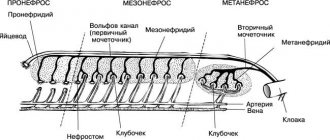What breeds of dogs are eaten in Korea? This question is asked by many European residents. In principle, the negative attitude towards eating dog meat is quite understandable. After all, for a Russian person a dog is more than a friend. In our country, these animals are the main characters of our favorite films, serve as guides and rescuers, and protect the house from uninvited guests. By the way, animal rights activists around the world also consider the actions of the Koreans to be unlawful.
However, if you look at it, all people (except vegetarians) eat meat dishes. Pork, beef, rabbit, chicken - all this also once enjoyed life, basked in the sun, and took care of its offspring. So why is the relevant question only about what breeds of dogs eat, and not, for example, what kind of chickens or geese? In this regard, the conclusion suggests itself that only vegetarians who do not eat meat at all can condemn the actions of Koreans. It is better for the rest to understand that the culture and traditions of other peoples should also be respected, no matter how acceptable it is for us.
What breed of dogs do Koreans eat?
One should not think that in Korea they eat all dogs indiscriminately, and every mongrel can become dinner or lunch for a hungry homo sapiens. Not at all, Koreans love their pets very much and would never eat them. There are special food dogs for this purpose. In addition, you should know that the sale of dogs is officially prohibited in Korea. This meat is considered a delicacy and medicine, so it will not be sold just like that, much less served in a restaurant instead of chicken or veal. Asians themselves cannot afford to eat it every day, although they consider it very tasty.
Why do many organizations around the world oppose eating animal meat?
Not only Europeans and Americans, but also the Koreans, Chinese, and Vietnamese themselves are against eating dog meat. Recently there was a big protest in Thailand, where several thousand Thais, holding their pets, protested against eating dog meat.
Important! In Asian countries, dogs used to be eaten out of hunger, but in the modern world things are better, so there is no need to resort to such measures. Dogs are pets, close and loyal friends of humans; killing them is contrary to human norms and values.
Every year, new petitions appear demanding to ban the dog-eating festival in the Chinese province of Guangxi Chao. Celebrities such as M. Damon, R. and K. Mara, P. Andersen, K. Bell and H. Phoenix also demand that they give up such food.
What kind of people eat dogs? These are mainly representatives of Asian countries, who for the most part do not see anything reprehensible in this. However, for many, such a complex truth becomes a real nightmare, which is why protests and petitions against Asian dog food are increasingly appearing.
How food dogs are kept
When asked what breeds of dogs are eaten in Korea, many answer: chow-chow. This is not entirely true, although this breed is also used for food, but much less often. Even in ancient times, dogs without hair, the Sholoitzcuintle, were very popular. Nowadays, dogs are raised on farms for food, just like pigs or cows. They are usually slaughtered at the age of 6 months to a year. It is believed that animal meat is most valuable during this period.
What kind of dogs do they eat in China? Basically the same as in Korea. The most meat breed is Nureong. They are slightly similar to chow chows. It should be noted that Koreans do not recommend eating the meat of a dog that has not been properly fed or that has not been prepared according to technology. They claim that such a product not only has no nutritional value, but can also be harmful to health. Therefore, it is very important to understand exactly what kind of dogs are eaten. Suddenly, gastronomic preferences in Russia will also change someday.
Strange features of the cooking of other nations
Speaking about the strange culinary traditions of different nations, it should be borne in mind that in most cases, when dishes made from strange ingredients appear in the national cuisine, this is due to 2 factors:
- Hunger - people are omnivores and, if necessary, can eat any running, crawling or flying creature.
- Availability – food that does not require much effort to obtain will always be preferred.
Based on this trend, it can be assumed that the impetus for the appearance of dog meat dishes on the menu of Korean housewives was famine caused by a lean year. And since then, dogs have become not only loyal friends of Koreans, but also a backup option in case of another drought or flood.
By the way, it was hunger that became the reason that in Peru, in the city of Chincha Alta, you can try soup made from an ordinary domestic cat. This is not a typo - cat meat is indeed still cooked in some Latin American countries, although the hungry years that gave birth to such a tradition are long gone.
Speaking about the availability of food that seems strange to us, iguanas, which Mexicans love so much, immediately come to mind. And in some states of the USA you can be offered roast raccoon, which is a traditional dish of both Indians and later American hunters. And the red squirrels, which we so love to call and feed in parks, in Canada and Alaska may well become a pleasant excuse to drink beer with friends while enjoying a squirrel barbecue.
Beneficial properties of dog meat
Having figured out what breeds of dogs eat, you need to understand what is special about dog meat that it is so highly valued by Asians. This meat is considered a product that can balance internal energy, improve digestion, and saturate the body with vitamins A and B. Dishes made from dog meat are called food for longevity. Dog fat is used to treat colds, lung diseases, skin diseases, and muscle pain.
Kimchi: 800 years of tradition
The traditional Korean dish kimchi is an analogue of our pickled vegetables. Its appearance dates back to the 13th century, and in its modern form it was formed by the 16th century. The basis for kimchi can be:
- Cabbage;
- Radish;
- Chinese cabbage;
- Zucchini;
- Cucumbers.
Depending on the recipe, the following is added to kimchi:
- Onion;
- Garlic;
- Ginger;
- Red pepper;
- Anchovies;
- Shrimps;
- Citrons;
- Black pepper, etc.
Kimchi, like rice, is served with almost every dish. It is rich in vitamins and microelements, and the calorie content is only 30-35 kcal per 100 grams, which is 4 times less than rice. But constant consumption of kimchi often has a negative impact on the health of Koreans.
Spicy zucchini kimchi with red pepper.
Wedding dish made from dog meat
To prepare an original delicacy for a Russian person you will need:
- food dog meat – 3 kg;
- vinegar – 300 ml;
- garlic – 0.5 kg;
- onion – 3 heads;
- tomato sauce – 500 ml;
- green capsicum – 300 g;
- liver pate – 500 g;
- pineapple – 1 pc.;
- water - 1.5 l;
- black pepper;
- hot pepper seasoning;
- bay leaf, salt.
A medium-sized dog is slaughtered, the fur is singed, and the skin is removed while it is still hot. Cut the meat from the carcass and chop it into pieces of about 2 cm. Next, make the marinade. To do this, mix vinegar, crushed garlic, ground black pepper and hot pepper seasoning. Pour the finished marinade over the meat and let it stand for 2-3 hours. After the time has passed, the meat is removed from the marinade, lightly squeezed and fried in a large amount of oil over a large open fire. When the meat begins to brown, add onion and pineapple, chopped into large rings. Continue to fry for a few more minutes until the food is soft. After this, add tomato sauce, hot water, green pepper and bay leaf. Cover with a lid. Bury the cauldron in hot coals and leave until the meat is tender. At the end, add the pate and simmer for another 5-7 minutes. Dog meat in this dish is sometimes replaced with lamb, but this significantly changes the taste of the dish, and not for the better.
Jeju
- Height: from 48 to 54 cm
- Weight: from 18 to 25 kg
- Life expectancy: 13 to 15 years
Jeju were originally bred on the island of the same name, located off the coast of Korea. They are very similar to the Korean Jindo, but with more pointed foreheads. It would be hard to find a rarer dog than the Jeju, as the breed was virtually wiped out in the 1980s. The three surviving specimens were used to revive this ancient breed, which originated on Jeju Island more than 3,000 years ago . In 2010, there were only 69 purebred Jeju in the world, although their numbers are now growing thanks to an aggressive conservation campaign.
Fun fact: Breeders say that a purebred female Jeju should look like a fox, and a male should look like a wolf.
This is one of the largest native dogs of Korea. Jeju owners claim that their pets are highly territorial , hardy, alert and brave, making them ideal watchdogs. They are wary of strangers. Be sure to train and socialize them at a young age to prevent the development of aggressive behavior.
The Jeju have an average lifespan of 14 years, and they remain active throughout their lives. This breed is prone to mange, food and skin allergies.
Sugar instead of salt
Koreans have a special attitude towards salt and sugar. They practically do not use salt, and if they add it to food, it is very little. Instead, they enhance the taste with seasonings. Although some kimchi recipes call for too much salt.
According to research, Koreans consume 2.7 times more salt than a person needs. The main reason is the kimchi they eat every day.
Koreans have a very interesting attitude towards sugar. They prefer to sprinkle it on many vegetables, such as tomatoes and cucumbers. And when preparing desserts and cakes it is practically not used.
This is interesting:
The owner of a Seoul restaurant with traditional Ukrainian cuisine gave an interview to a news channel. He complained about his Korean chefs, who were arbitrary in his absence. Every now and then they strive to add sugar to the borscht - they think it will be tastier.
Soups
The reason for the special slimness and longevity of Koreans, in addition to the daily consumption of kimchi, is considered to be their love for soups. The local population cannot do without broths with noodles, vegetables and seafood. Such dishes are traditionally served during special occasions.
There are special thick soups that are more reminiscent of stew to a domestic tourist. Koreans prepare such dishes in clay pots. Among the characteristic ingredients it is worth noting meat and fish, vegetables, legumes, and soy sauce. In the summer, Koreans serve chilled thick soups, similar to jellied meat made from offal. Winter versions of soups contain an abundance of hot spices, which produce a warming effect on the body.
International attention
In 1988, the South Korean government urged its citizens not to eat dog meat during the Summer Olympics in Seoul to avoid publicity. Also during this time, all restaurants serving the most popular dog meat dishes were closed in order to improve the country's image. However, in 1998, a review article reported that, despite an official government ban for ten years, nearly 20,000 restaurants continued to serve dog meat.
Discussions on this difficult topic for the country flared up again in 2001 during the World Cup. The championship organizers, under pressure from animal rights groups, demanded that the Korean government find possible ways to resolve the issue. An animal rights movement has prompted people to boycott unless the government bans the sale of dog meat in Seoul restaurants. However, this movement turned out to be unfair and inappropriate for a large number of Koreans and did not change the situation.
Rice is the head of everything
Flour products are not common in South Korea. But what do Koreans eat instead of bread? Of course, rice. It is served with almost every dish, boiled or steamed. Most Korean families have a rice cooker at home.
It is mainly sold in large paper bags of 10 kg. This volume is enough for an ordinary family for a month. Rice is steamed or boiled and can be served alone or with vegetables, beans, eggs, seafood or meat.
Rice is also used to make flour, which is used to prepare other dishes (noodles, bread, cakes). Moreover, rice noodles are often combined with regular boiled rice. It's like eating our vermicelli with bread
This is interesting:
The calorie content of rice is 120-140 kcal per 100 g, and wheat - 290-310 kcal per 100 g. Moreover, from the same area you can harvest much more rice than wheat. You can get more calories from one hectare of rice than from one hectare of wheat. That's why:
- Rice does not contribute to excess weight gain;
- Growing rice can feed more people than cultivating wheat.
Homemade rice cakes.
Beverages
So we found out what Koreans eat. Finally, let's take a look at the drinks that are in demand among the local population. The counters of any small store here are filled with a mass of various types of energy drinks. There is nothing surprising. After all, Koreans are known as one of the most hardworking nations. The adult population of the country feels a critical lack of strength and vigor due to constant busyness at work and lack of proper sleep. Energy drinks allow you to follow your planned work plan.
When it comes to alcohol, Koreans prefer to drink the traditional rice liquor Soju. The low-alcohol drink is sold everywhere, not only in stores, but also in small street eateries. Any Korean can buy the drink absolutely legally, without presenting documents confirming age. Rice wine and beer are also popular here. However, a Russian tourist is unlikely to like these specific drinks.











